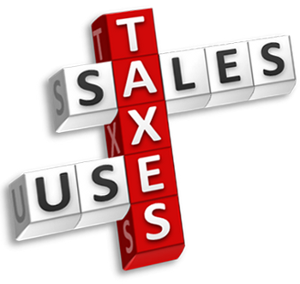Ohio use tax amnesty program increasing revenues
Ohio has had a "use tax" that mostly has been ignored since it was created in 1936. Given a nudge by the state in the form of an amnesty program, small businesses are starting to pay up.
Dec. 03, 2012

Ohio has had a “use tax” that mostly has been ignored since it was created in 1936. Given a nudge by the state in the form of an amnesty program, small businesses are starting to pay up.
The program, launched by the state more than a year ago, has generated $15.7 million from 1,680 businesses, according to the Ohio Department of Taxation.
“Has it worked? Yes, it has met or exceeded our goals,” said Joseph Testa, the state’s tax commissioner.
The use tax is a complement to the state sales tax and dates to a time when some neighboring states didn’t have a sales tax. It requires that Ohioans buying items out of state pay sales tax to Ohio if it isn’t collected by the business. It was meant, in part, to protect Ohio businesses from losing sales to out-of-state companies that didn’t charge sales tax. The tax largely had been forgotten until the Internet came along and, with it, an explosion in online shopping.
With the amnesty, the state is targeting businesses that haven’t paid the tax, mainly because they didn’t know about it.
The tax is a big deal for the state, generating about $1 billion a year.
The amnesty program began in October 2011 and extends into May. It allows businesses to pay back taxes incurred since January 2009 with no penalty or interest. The program also provides the option of a payment plan if the debt exceeds $1,000.
The state has found that large companies with significant accounting and financial resources have been aware of the use tax all along. The state also found that many small and medium-size businesses weren’t.
Testa said the amnesty program has been accompanied by an education program designed to help businesses pay back taxes and comply going forward.
Even so, businesses continue to have trouble grasping it, said Justin Mohler, an accountant in Springfield. “Taxpayers still do not understand the magnitude of this,” he said.
He said some of his clients refused to go along with the state and are willing to risk a government audit, while others are “scared to death” of an audit and were quick to comply.
He and Testa said the amnesty’s terms are generous to small businesses and others looking to get caught up.
“This is the best deal Ohio has ever offered,” Mohler said.
The amnesty has the backing of the Ohio Chamber of Commerce. “We’re strongly supportive of the amnesty, and we haven’t heard any complaints about it,” said Dan Navis, the chamber’s tax director.
While the use-tax amnesty for businesses goes on, the state has wrapped up a second amnesty program that covered most state and some local taxes, including the individual income tax, school-district income tax and sales tax. That program, which ran from May 1 to June 15, generated $28 million.
Neither issue deals with the low tax collections from consumers buying products online.
Unless the retailer collects the sales tax — and many don’t — it is up to Ohioans to voluntarily report on their income-tax returns their purchases and any use tax due. Such tax payments by individuals totaled about $3 million in 2011, compared with $10.1 billion in sales taxes that the state collected in the fiscal year that ended on June 30.
The state estimates that $350 million a year is lost in state and local sales-tax revenue because of online and mail-order sales.
“We have a long, long ways to go to comply on use tax,” Testa said.
———————–
Copyright 2012 – The Columbus Dispatch, Ohio
